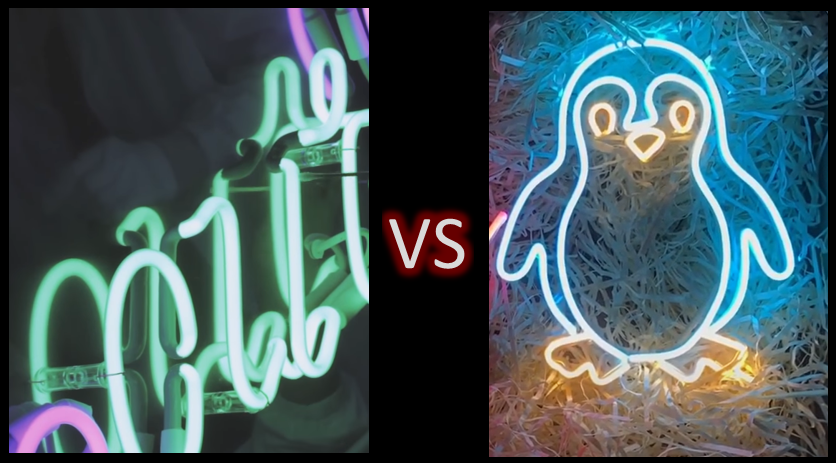Neon signs have made a massive comeback within the last decade which has seen them popping up in cafes, restaurants, offices, weddings, birthdays, and so on.
It has evolved from the more traditional neon glass, which would use inert gases to light up inside glass tubes to LED lights offering a similar look and feel. If you’re considering neon as a sign for your business, then here are a couple of pros and cons to help you make the right decision between Neon glass and Flex neon (LED).
TRADITIONAL NEON GLASS
Neon glass signage has been around since the late 1800s, and heading into the 1900s began to be used in motels, restaurants, automobiles, entertainment, and radio. Traditional neon is made in glass tubes with inert gases charged by modest electrodes from both ends.
PROS
- The traditional neon glass lasts up to 15 years without replacement if placed in the right environment and conditions.
- It offers a truly authentic retro feel to your business.
- It lights up on every side, offers sharp detail, and the light doesn’t blur out the detail of the lettering.
- It can run on AC or DC.
CONS
- It may be more expensive if you’re on a tight budget.
- The look and feel may not suit every business. For example; in an office, or high traffic area.
- If placed in the wrong environment and it breaks, then you’ll need a specialist to repair it.
- Limited colours available based on the gas and glass colour configurations.
FLEX NEON (LED)
LEDs have been around for quite some time, but as technology advanced, so did the LEDs. It became pliable in ways that allow it to be replicated to the look and feel of traditional glass neon. These are called Flex neon.
These strips of LEDs would be retrofitted into a cut-out acrylic of any lettering, and later connected with wires to power up the entire sign.
PROS
- Cheaper to have a neon LED made up.
- Quicker to produce and made ready within days.
- Can be used for animated sequences and designed more quickly with greater complexity.
- Very low maintenance.
- Extremely durable.
- Unlimited colour options
- Uses low voltage.
CONS
- Upfront costs invested in future-proofing.
- It only lasts up to 4 years without replacement.
- It doesn’t feel authentic as being retro.
- Some higher watt LEDs run hot and need a heatsink.
As you can see, there are pros and cons to weigh up with each one. If you need more guidance or have any other questions, feel free to contact us.


